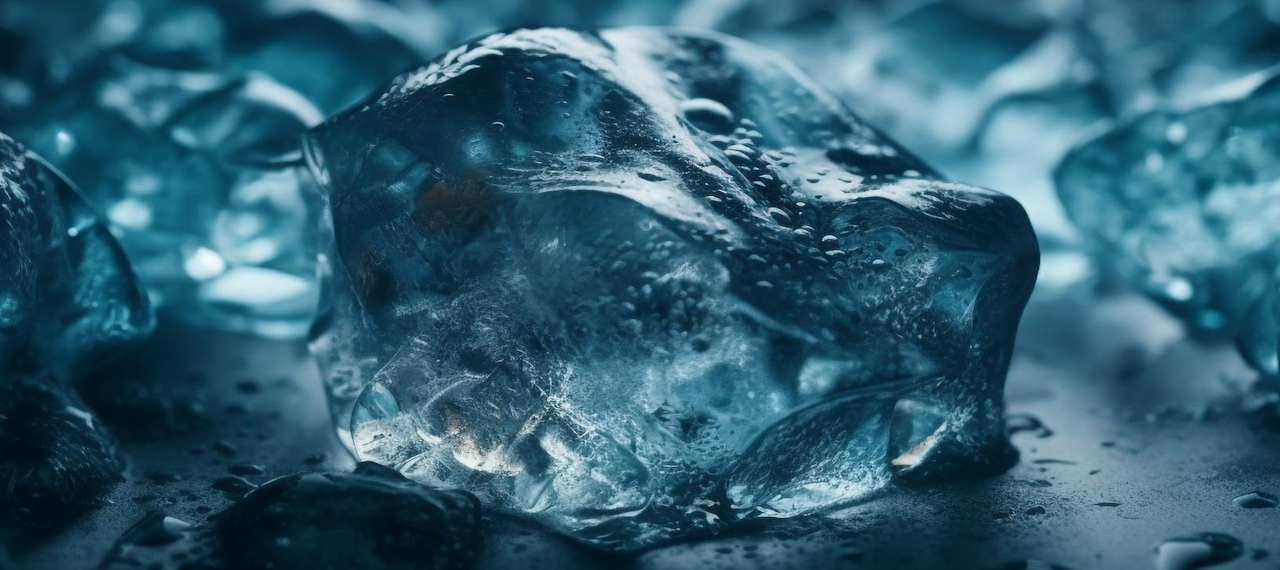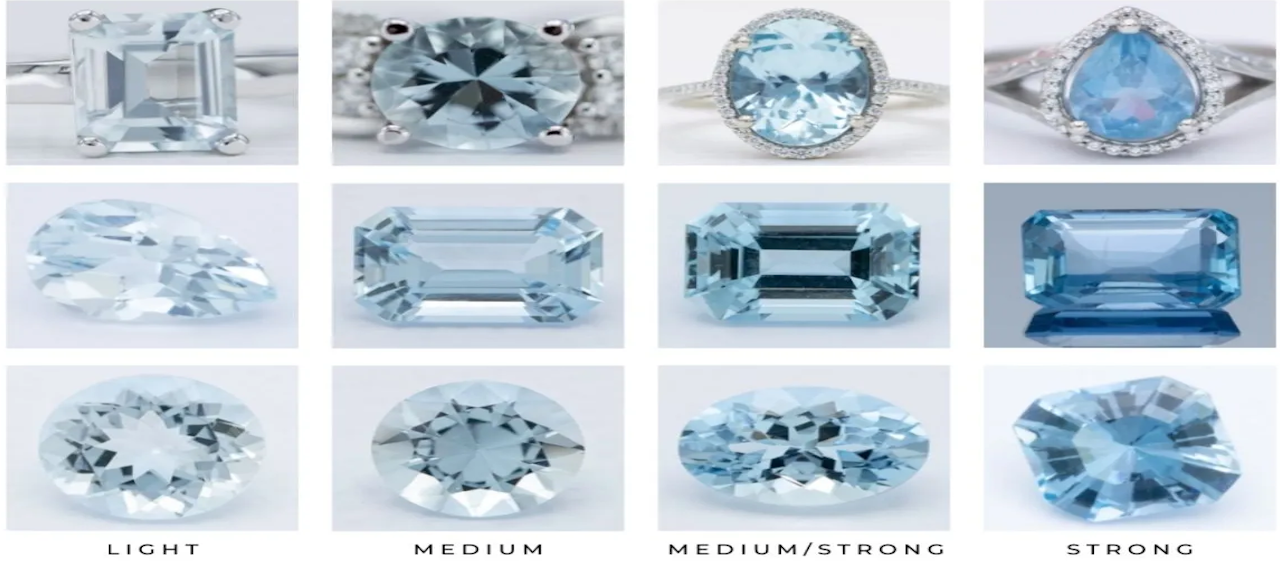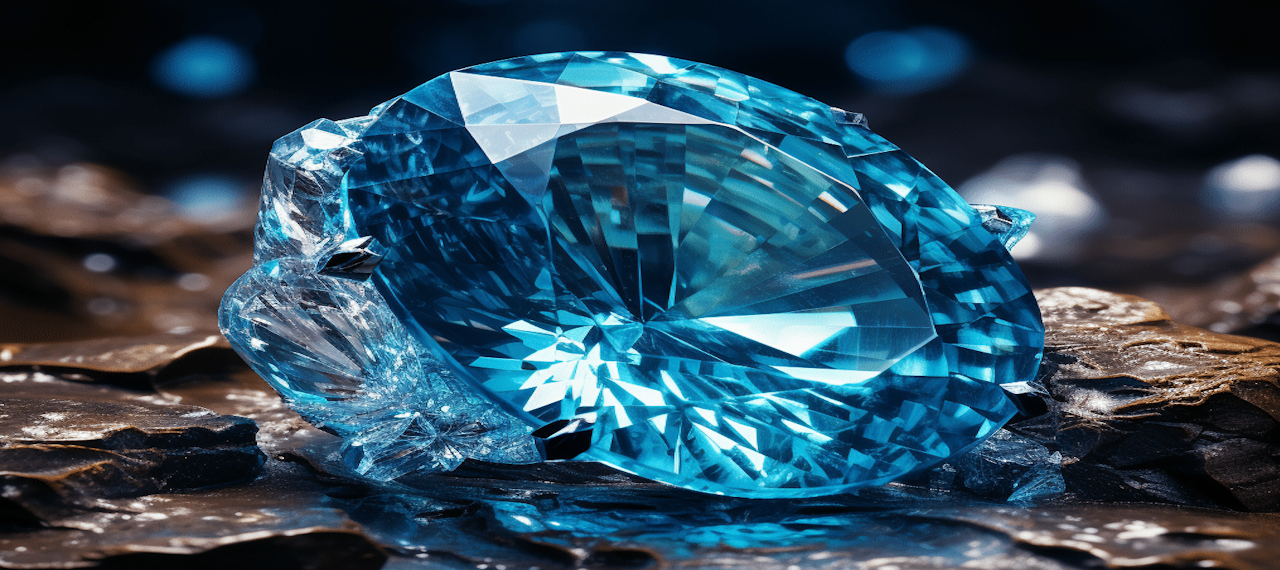The Captivating Blue Gem of Serenity and Depth
Aquamarine, with its serene blue hues reminiscent of the tranquil ocean, has long been admired for its calming beauty. In this exploration of aquamarine, we will uncover the captivating features of this gemstone, including its hardness, cutting techniques, valuation factors, production locations, and the timeless allure that makes aquamarine a cherished gem in the world of jewelry.

Hardness Level: 7.5-8/10
Aquamarine, a variety of the mineral beryl, boasts a commendable hardness of 7.5 to 8 on the Mohs scale. This hardness ensures durability, making aquamarine suitable for various jewelry applications. With proper care, aquamarine can withstand the rigors of everyday wear, retaining its clarity and brilliance.
Cutting Techniques:
Aquamarine is often cut into various shapes to enhance its inherent luster and clarity. Common cuts include emerald, oval, round, and pear cuts. The precision of the cut plays a crucial role in revealing the gemstone’s soothing blue tones.

Visual Valuation Guide:
Evaluating aquamarine involves considering factors such as color, clarity, cut, and carat weight. The most prized aquamarines exhibit a delicate blue hue with a touch of green, reminiscent of the clear waters of the sea. Clarity is essential, with minimal inclusions enhancing the overall value.
Resell Value:
Aquamarine, known for its soothing appeal and versatility, can maintain its value well. The resell value is influenced by market trends and consumer preferences. Staying informed about market dynamics and seeking expert advice ensures individuals make informed decisions when considering aquamarine as an investment.

Synthetic Aquamarines:
While synthetic aquamarines are available, natural aquamarines are highly prized for their unique characteristics. Transparency in disclosing whether an aquamarine is natural or synthetic is crucial in the gemstone market.
Production Locations:
Major producers of aquamarine include Brazil, Madagascar, Nigeria, Mozambique, and Afghanistan. Each region contributes aquamarines with varying shades of blue, and the gemstone’s color may be influenced by trace elements within the crystal.
Aquamarine, with its tranquil blue beauty, continues to be a gemstone associated with serenity and depth. Whether set in classic jewelry pieces or contemporary designs, aquamarine represents a connection to the calming essence of the sea. Understanding the distinct qualities of aquamarine adds depth to the appreciation for this timeless gem and its enduring place in the world of precious stones.